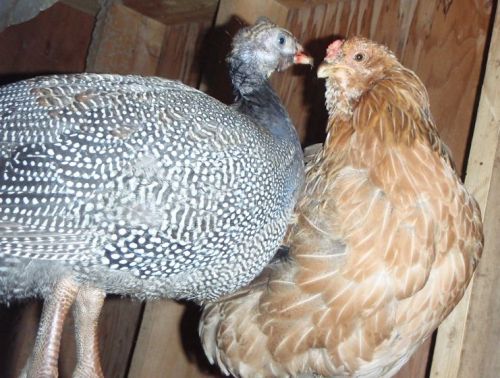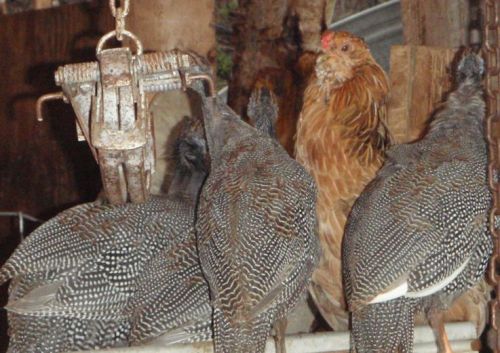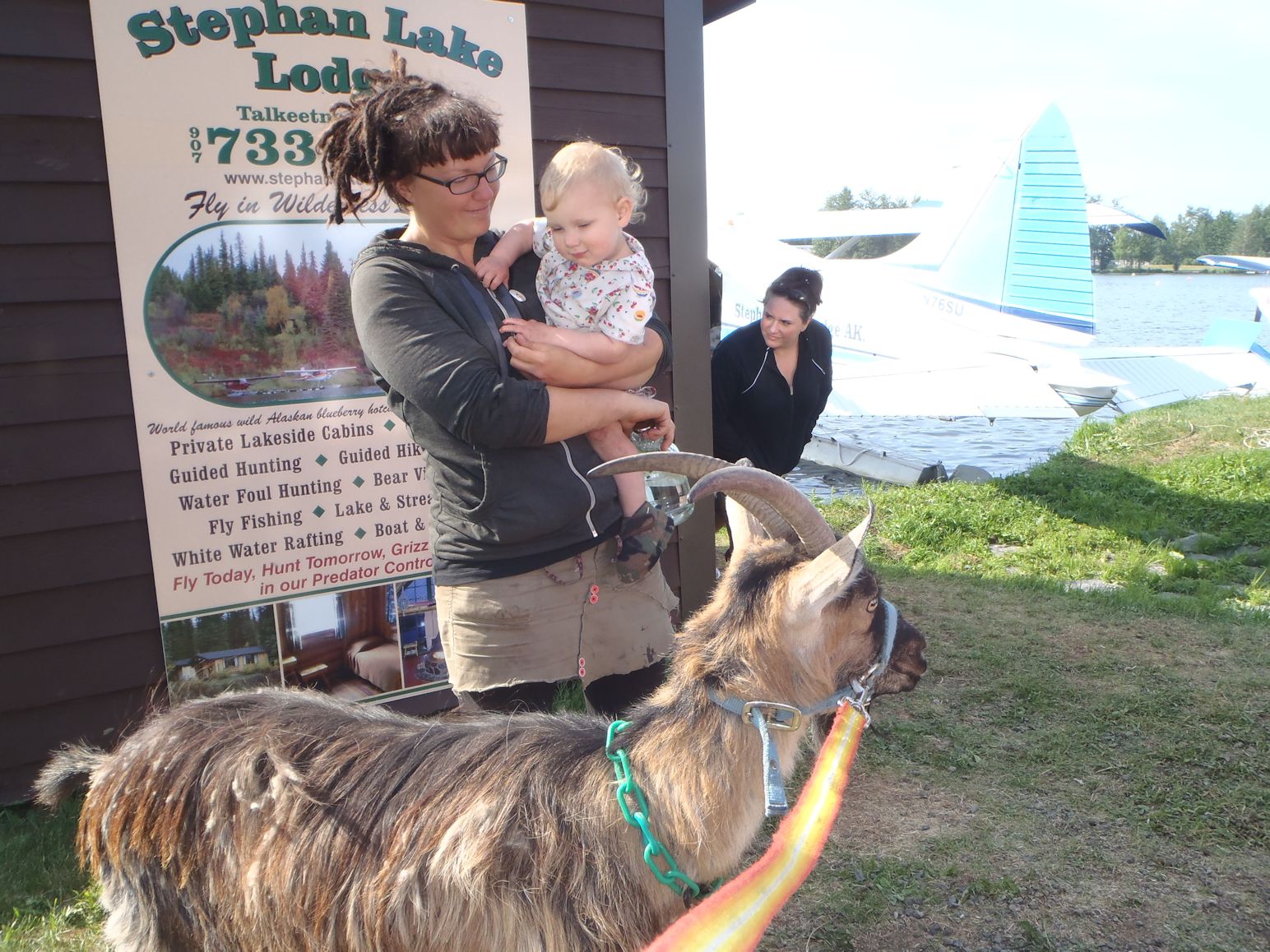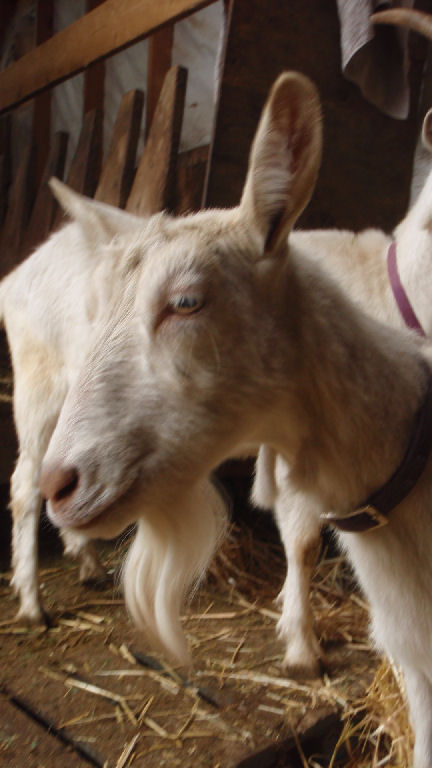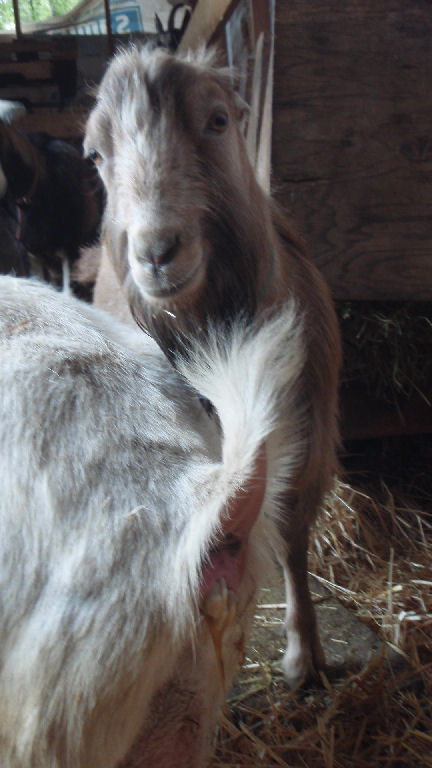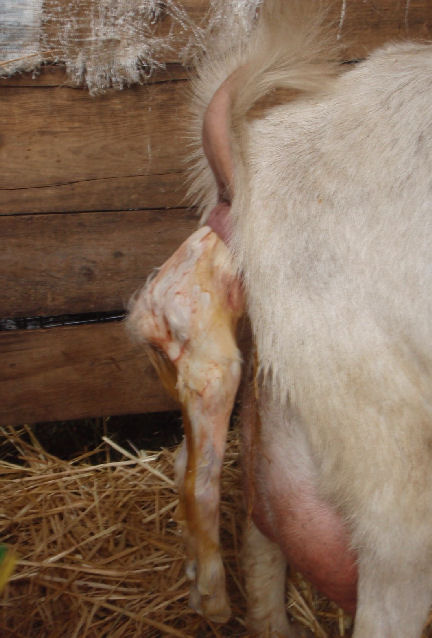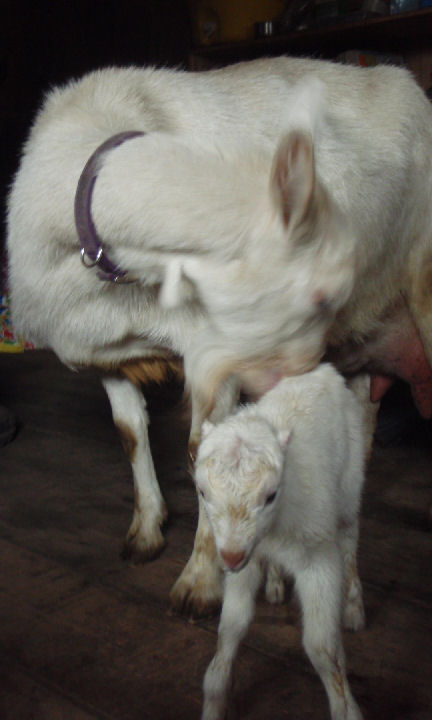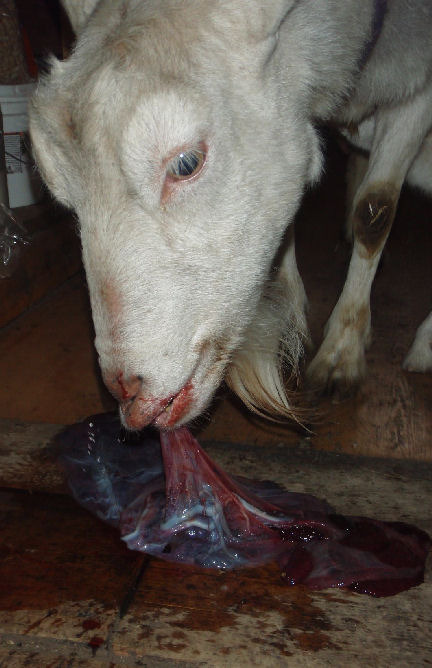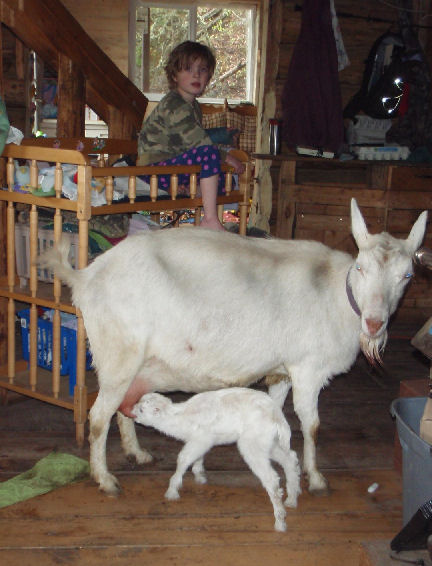Okay, I can't wait any longer to share my new experiment with you.
Alfalfa hay and pellets have increased in cost 200% over the last three years. In addition, the evil Monsanto has put GMO alfalfa on the market and we are no longer safe if we depend on it as the base of our feed program.
Alaska is a wonderful place to grow barley. Whatever we spill grows on its own without intervention or support. It grows to full harvest, and it does so happily. There are lots of barley farmers here, and the going rate is $315 a ton.
Enter the concept of barley fodder: soaking, sprouting and growing barley grass indoors to feed to your livestock. Growing barley like this has the ability to turn 1 ton of grain into 6 tons of fresh food for your animals in the space of 7 days.
So we decided to give it a whirl... I ordered a few tons of grain to be delivered and split among a couple local farmers. Then we built a set of shelves to hold the sprouting trays. And that was only 9 days ago. My trays are 18x26 and 3 inches deep. I drilled 22 holes across the short ends that are 3/32". They are set up on a 1 inch slant and each tray drains into the one below it.
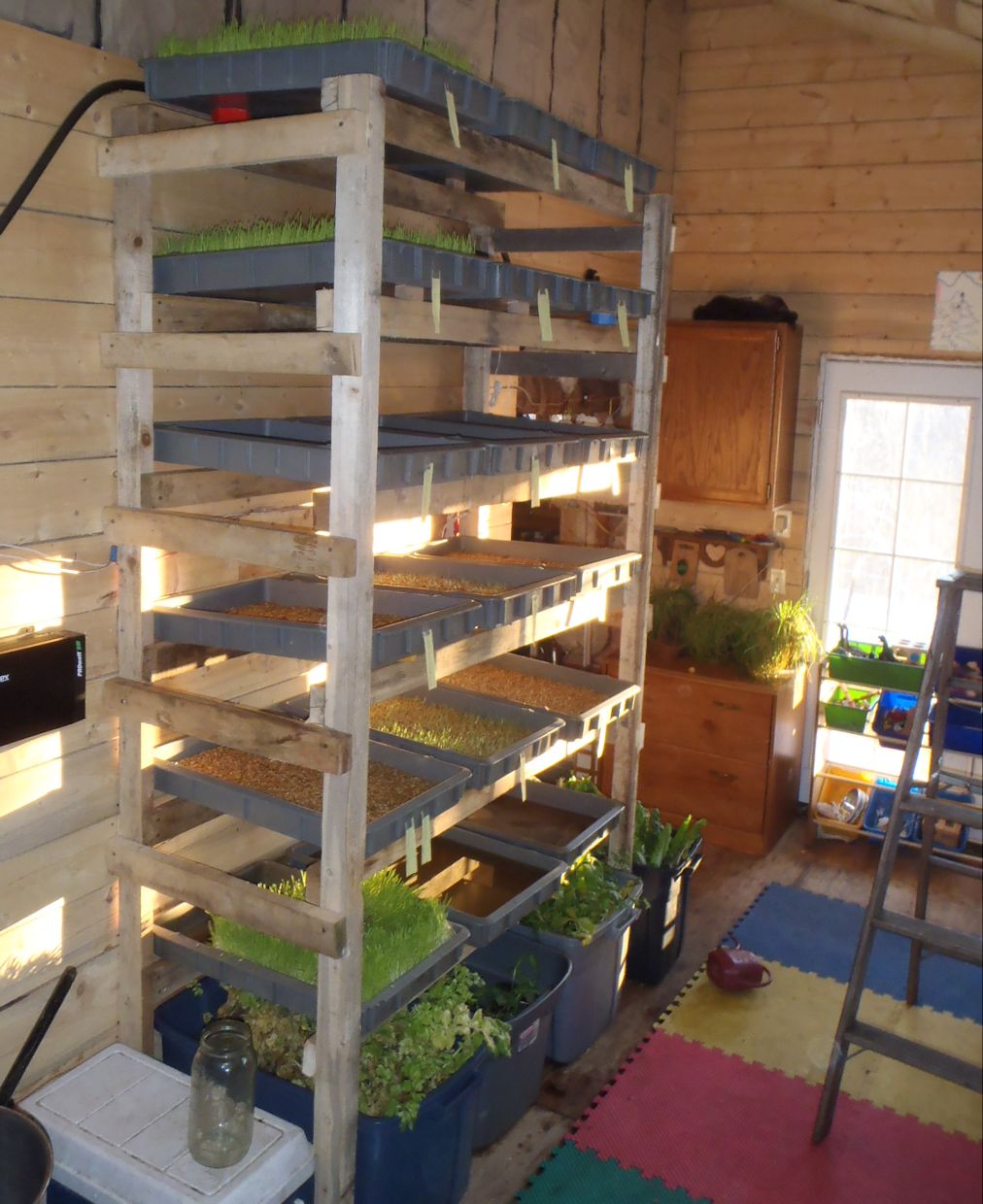
Today marks the second day of feeding my homegrown barley grass to our menagerie of goats and chickens and quail. The birds love it, devouring it preferentially over their usual grub. The goats aren't quite sure yet, but they're picking at it and entertaining the idea.
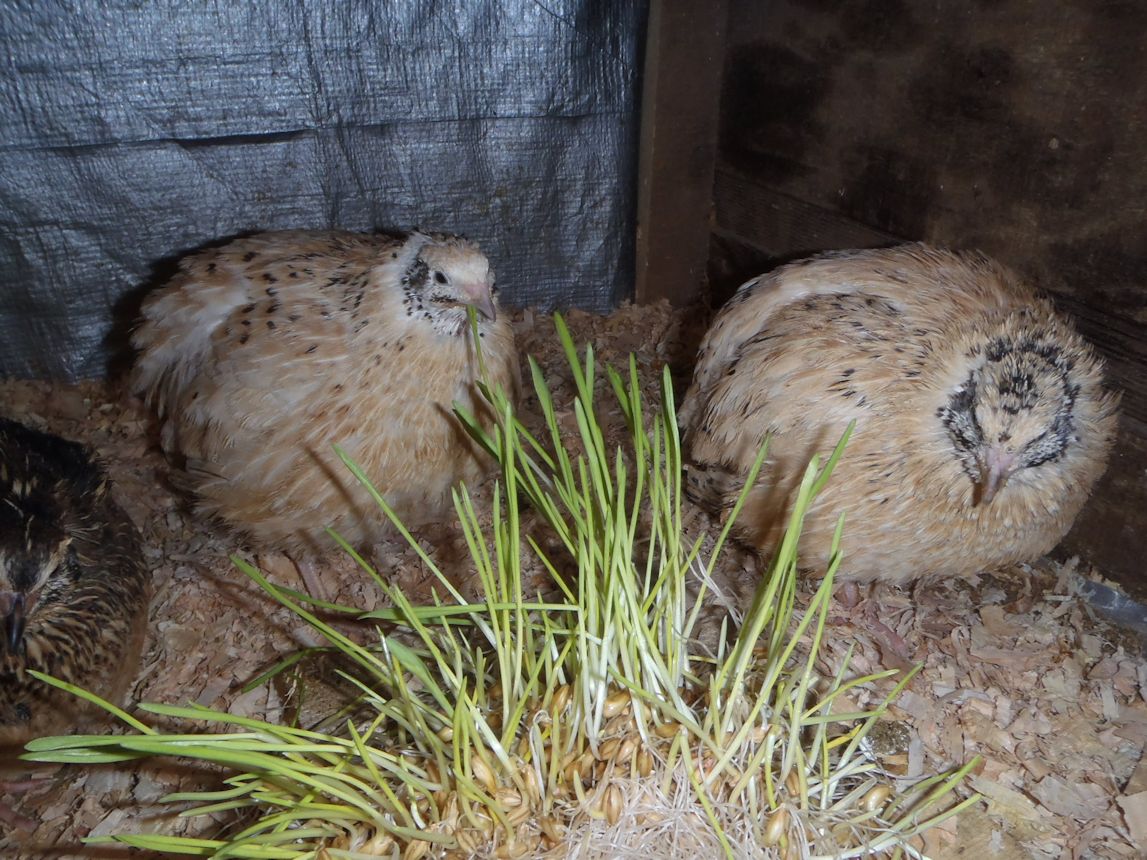
I'm sold... hook, line and sinker. Totally in, super stoked and in love with the project. It has taken over our family room and I couldn't be happier. I'm calling it a success. A really nice side effect is that we've heated the growing/family room with an oil stove which is providing excess heat for the comfort of our family, and all the trays of growing feed are adding humidity to our normal dry winter air. The average temp in the fodder room is 65 degrees.
Everyday I start another 7# of barley soaking, which is to be split between two trays. The grain gets drained after a number of hours- a number which we're still fine tuning to optimize germination rates. Then the soaked barley gets poured out into trays about 1/2" thick when smoothed out over the surface of the tray.
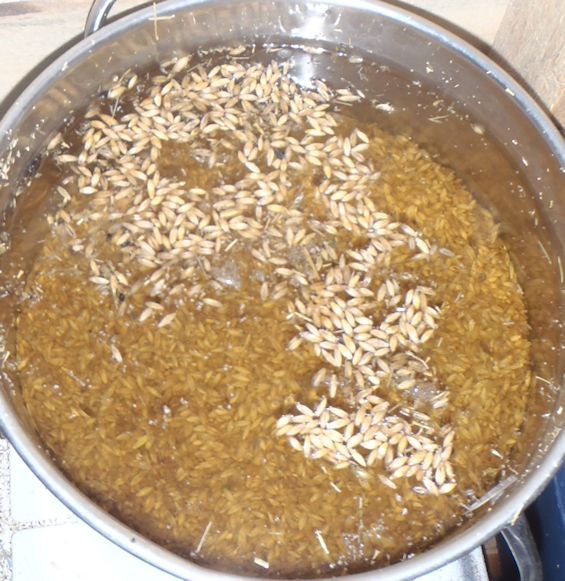
We water as needed on an individual tray basis, keeping things moist but not soaked. By the next day you can see the barley beginning to sprout. We call that day one. On day two, germination is wildly apparent with roots making their journey out and about seeking water.
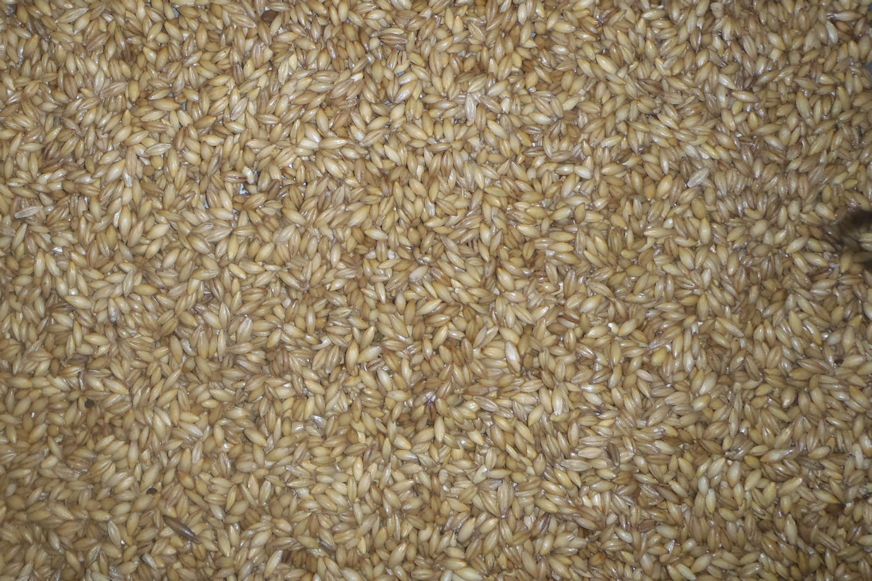

By day three I can see the occasional monocot signature shoots popping up, and this is the day that I measure for germination. What I've found so far is that an 8 hour soak gives a 60-70% germ rate on day 3. A 12 hour soak gave 44%, 16 hour soak was 20%, 20 hour soak was 17%, and 9.5 hour soak gave 50%. Soon we'll have stats for 6 hours and 3 hours and we'll know if we're headed in the right direction.
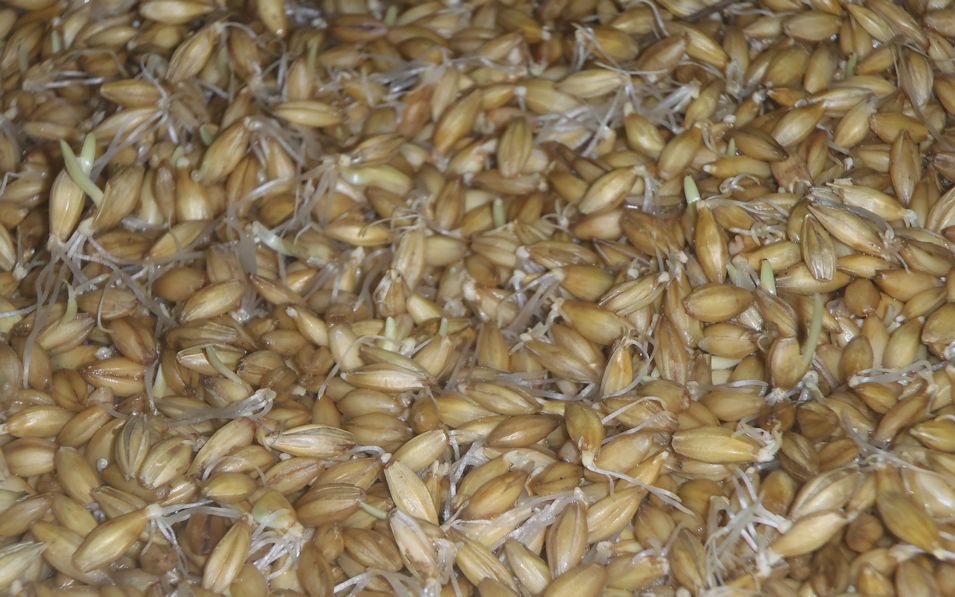
Day 4 marks the beginning of the root mat and the trays start to turn green with growing grass. On day five you can barely see the grain base as the green shoots take over and approach the top of the tray. By day six our fodder is at least 4 inches tall with a rootmat 1-2 inches thick.
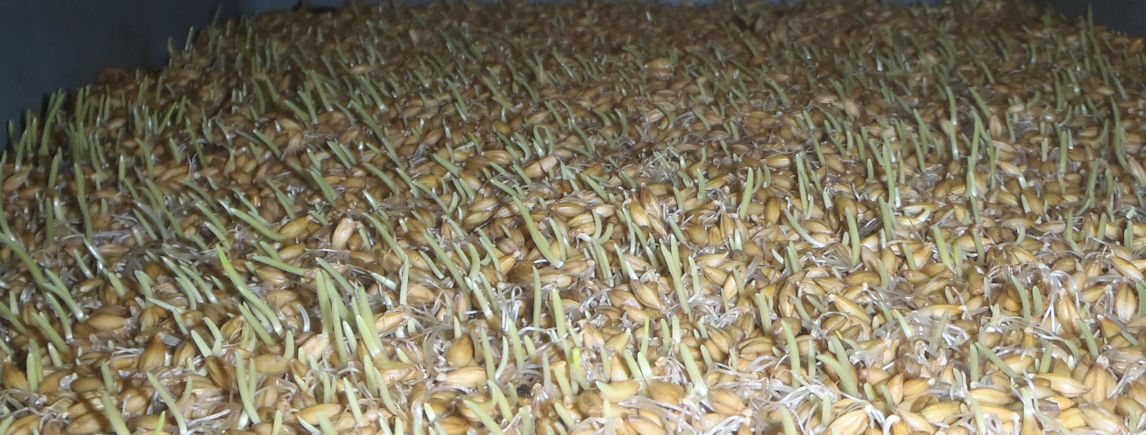
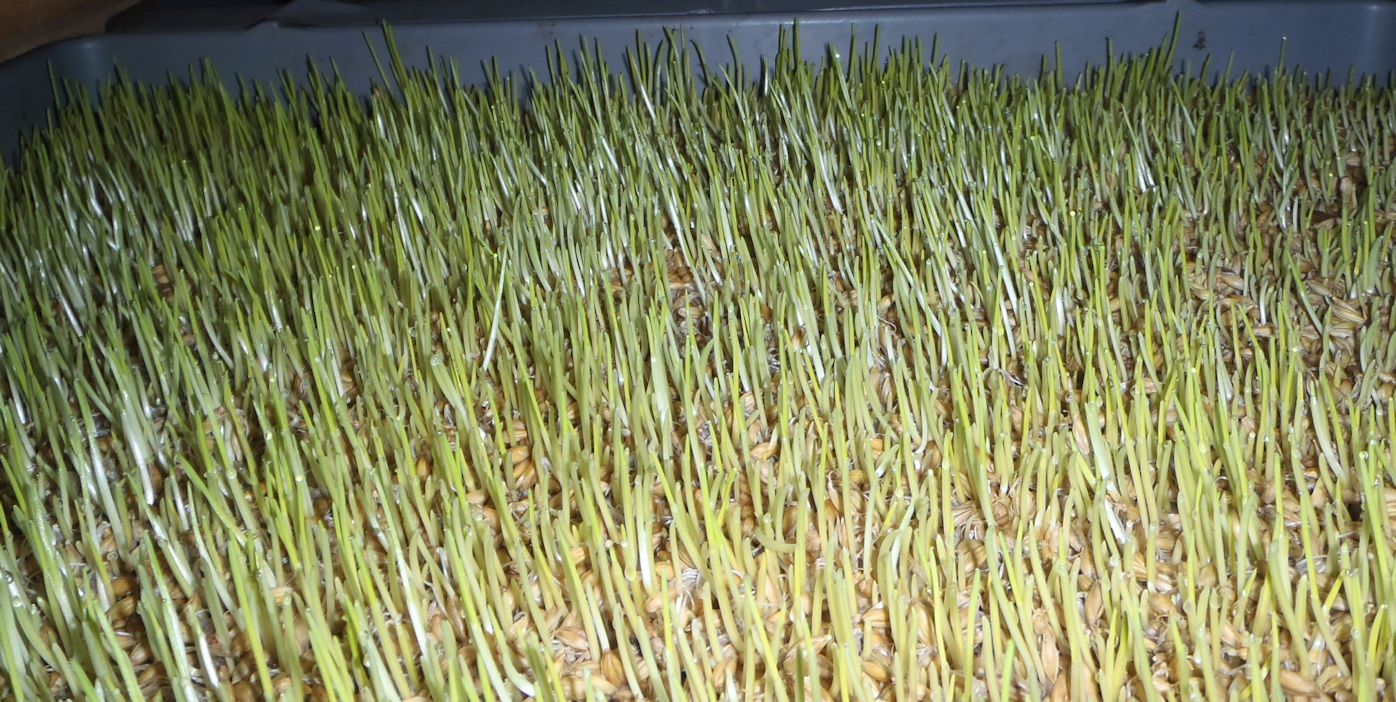
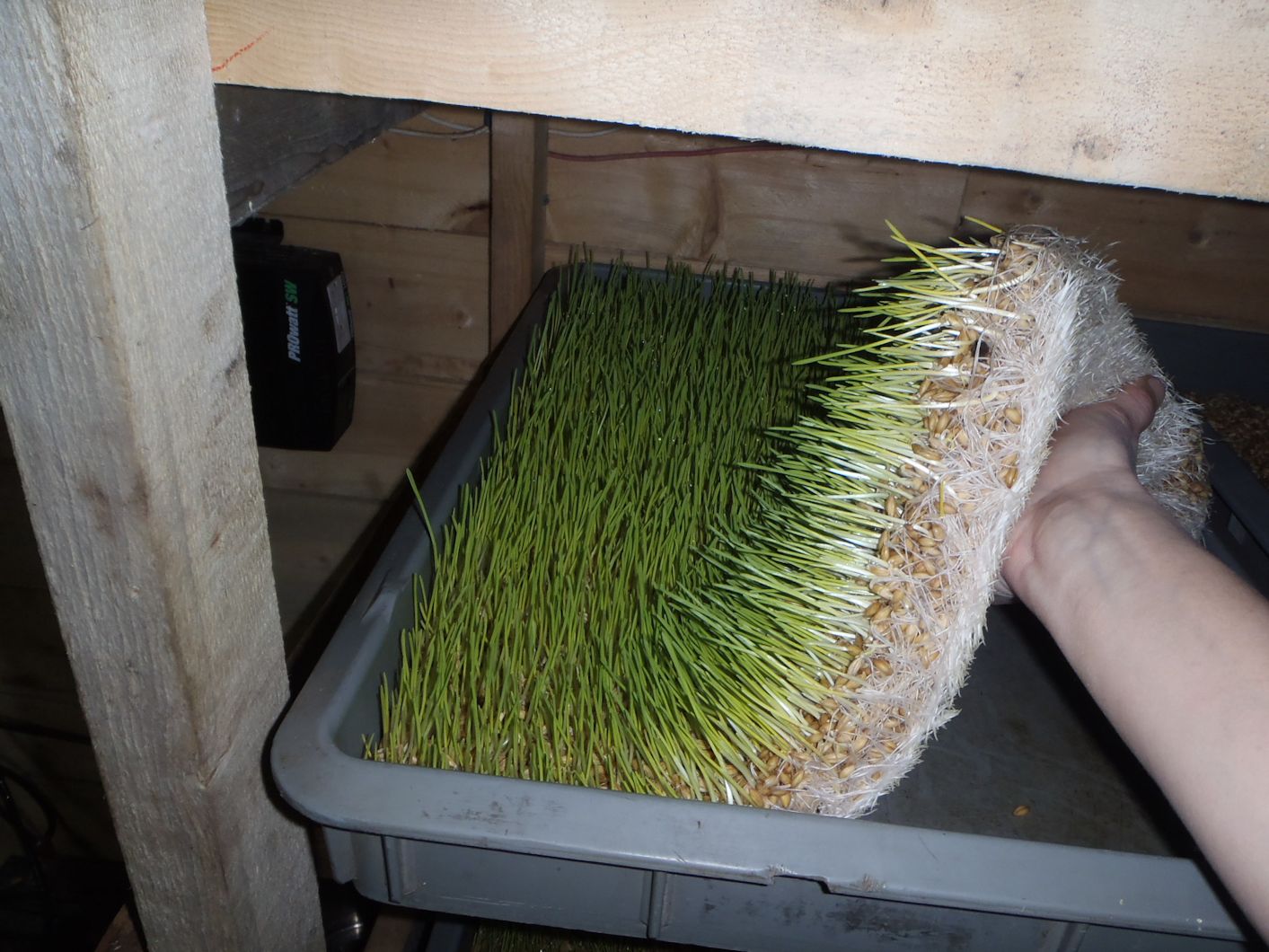
And then comes day 7 with its lovely 4-6 inch grass and it's time to feed the animals. So simple, a ton of fun, and pretty trouble free. I couldn't ask for more.
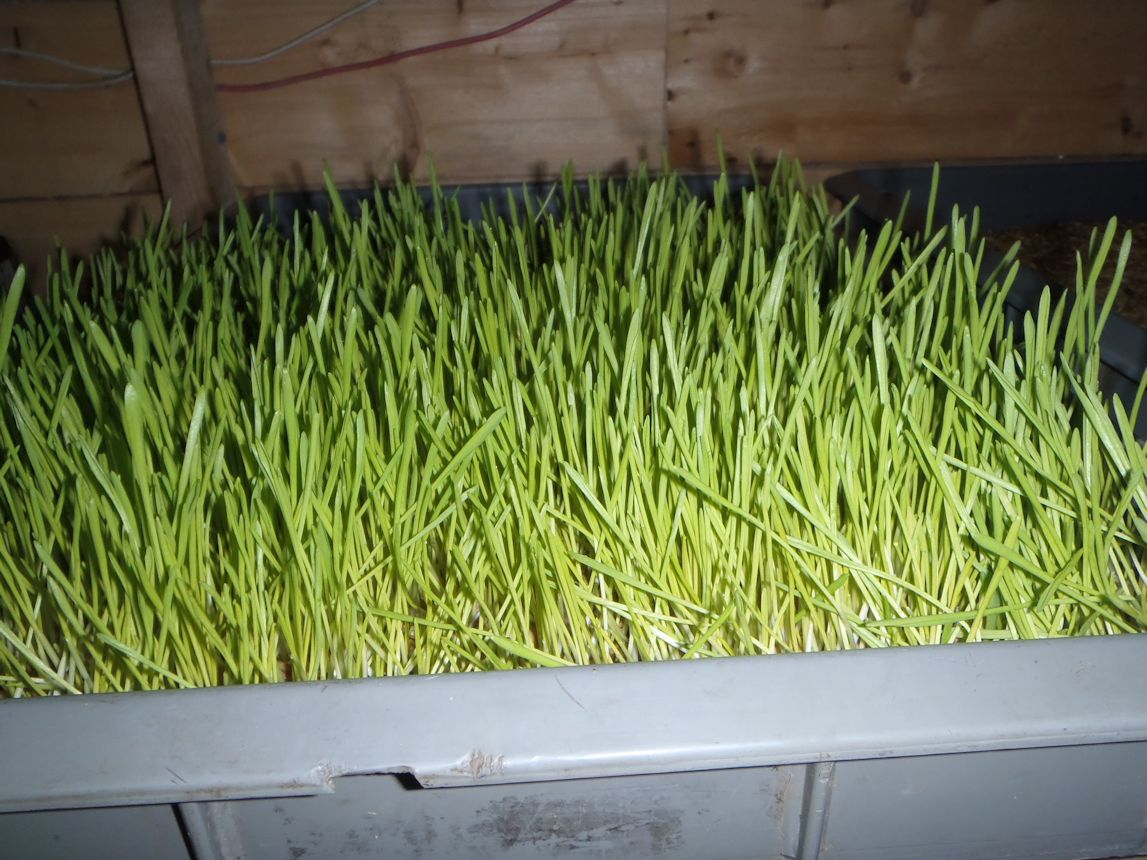
 Wednesday, November 27, 2013 at 3:51PM
Wednesday, November 27, 2013 at 3:51PM 
































